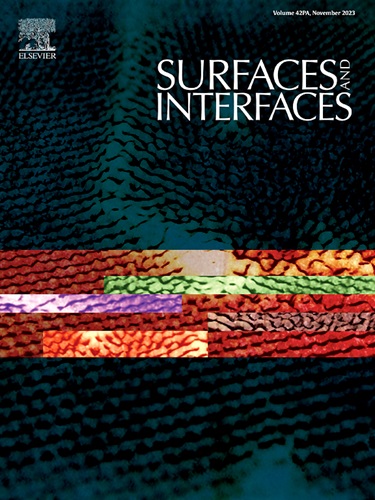Nickel-molybdenum oxide catalysts used in the catalytic hydrogenation of styrene oxide to produce 2-phenylethanol
IF 5.7
2区 材料科学
Q2 CHEMISTRY, PHYSICAL
引用次数: 0
Abstract
In this study, mixed molybdenum-nickel oxide catalysts were tested in the selective hydrogenation of styrene using hydrogen flow, magnetic stirring, and room temperature. This method is both economical and environmentally friendly for producing 2-phenylethanol, a key component of rose oil, known for its important properties that make it suitable for use in perfumery, cosmetics, detergents, medicine, and food. To prepare the catalysts, molybdenum-nickel oxides were synthesized by varying the nickel concentration to 15, 20, and 25 % molar relative to the molybdenum content, using nickel nitrate as the precursor. The catalysts were prepared via the coprecipitation method in an acidic medium. The resulting materials were characterized using various microscopic and spectroscopic techniques. Scanning electron microscopy analysis revealed that the molybdenum oxide particles increased in size, both in thickness and length, as the nickel concentration increased. Raman and X-ray spectra revealed that bands indicative of nickel-molybdenum interactions became more prominent with higher nickel content. This was due to increased conversion and selectivity for 2-phenylethanol as the nickel content in the molybdenum oxide increased.
镍钼氧化物催化剂用于氧化苯乙烯催化加氢生产2-苯乙醇
在本研究中,对钼镍氧化物混合催化剂在氢气流、磁搅拌和室温条件下对苯乙烯的选择性加氢进行了测试。这种生产2-苯乙醇的方法既经济又环保。2-苯乙醇是玫瑰精油的关键成分,因其重要特性而闻名,适用于香水、化妆品、洗涤剂、药品和食品。为了制备催化剂,以硝酸镍为前驱体,通过改变镍的浓度为钼含量的15%、20%和25%来合成钼镍氧化物。采用共沉淀法在酸性介质中制备催化剂。利用各种显微和光谱技术对所得材料进行了表征。扫描电镜分析表明,随着镍浓度的增加,氧化钼颗粒的厚度和长度均有所增加。拉曼光谱和x射线光谱显示,随着镍含量的增加,指示镍钼相互作用的条带变得更加突出。这是由于随着氧化钼中镍含量的增加,2-苯乙醇的转化率和选择性增加。
本文章由计算机程序翻译,如有差异,请以英文原文为准。
求助全文
约1分钟内获得全文
求助全文
来源期刊

Surfaces and Interfaces
Chemistry-General Chemistry
CiteScore
8.50
自引率
6.50%
发文量
753
审稿时长
35 days
期刊介绍:
The aim of the journal is to provide a respectful outlet for ''sound science'' papers in all research areas on surfaces and interfaces. We define sound science papers as papers that describe new and well-executed research, but that do not necessarily provide brand new insights or are merely a description of research results.
Surfaces and Interfaces publishes research papers in all fields of surface science which may not always find the right home on first submission to our Elsevier sister journals (Applied Surface, Surface and Coatings Technology, Thin Solid Films)
 求助内容:
求助内容: 应助结果提醒方式:
应助结果提醒方式:


